Zhongxia Zhang
Convolutional Neural Network with Convolutional Block Attention Module for Finger Vein Recognition
Feb 14, 2022Abstract:Convolutional neural networks have become a popular research in the field of finger vein recognition because of their powerful image feature representation. However, most researchers focus on improving the performance of the network by increasing the CNN depth and width, which often requires high computational effort. Moreover, we can notice that not only the importance of pixels in different channels is different, but also the importance of pixels in different positions of the same channel is different. To reduce the computational effort and to take into account the different importance of pixels, we propose a lightweight convolutional neural network with a convolutional block attention module (CBAM) for finger vein recognition, which can achieve a more accurate capture of visual structures through an attention mechanism. First, image sequences are fed into a lightweight convolutional neural network we designed to improve visual features. Afterwards, it learns to assign feature weights in an adaptive manner with the help of a convolutional block attention module. The experiments are carried out on two publicly available databases and the results demonstrate that the proposed method achieves a stable, highly accurate, and robust performance in multimodal finger recognition.
Finger Vein Recognition by Generating Code
Jan 21, 2021Abstract:Finger vein recognition has drawn increasing attention as one of the most popular and promising biometrics due to its high distinguishes ability, security and non-invasive procedure. The main idea of traditional schemes is to directly extract features from finger vein images or patterns and then compare features to find the best match. However, the features extracted from images contain much redundant data, while the features extracted from patterns are greatly influenced by image segmentation methods. To tack these problems, this paper proposes a new finger vein recognition by generating code. The proposed method does not require an image segmentation algorithm, is simple to calculate and has a small amount of data. Firstly, the finger vein images were divided into blocks to calculate the mean value. Then the centrosymmetric coding is performed by using the generated eigenmatrix. The obtained codewords are concatenated as the feature codewords of the image. The similarity between vein codes is measured by the ratio of minimum Hamming distance to codeword length. Extensive experiments on two public finger vein databases verify the effectiveness of the proposed method. The results indicate that our method outperforms the state-of-theart methods and has competitive potential in performing the matching task.
Real-time Locational Marginal Price Forecasting Using Generative Adversarial Network
Nov 09, 2020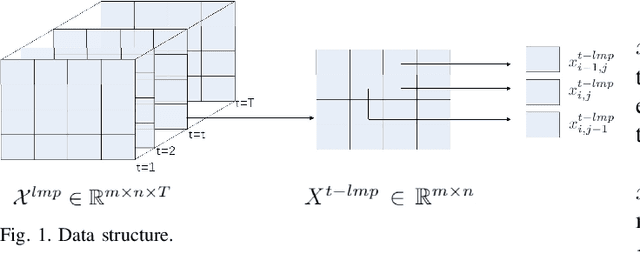
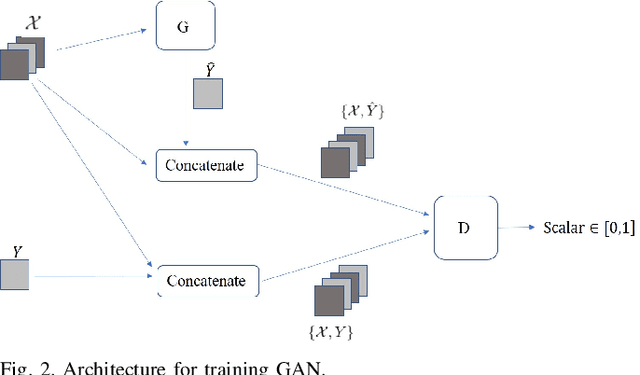
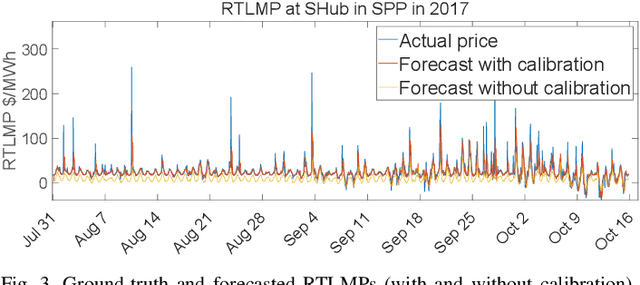
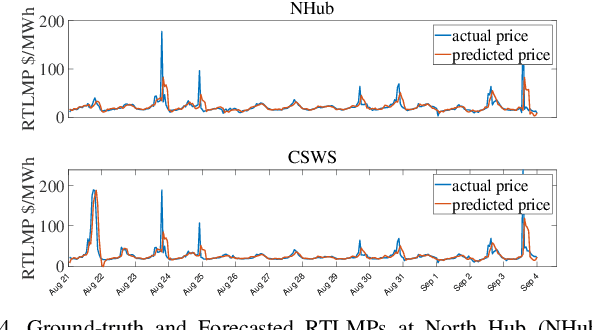
Abstract:In this paper, we propose a model-free unsupervised learning approach to forecast real-time locational marginal prices (RTLMPs) in wholesale electricity markets. By organizing system-wide hourly RTLMP data into a 3-dimensional (3D) tensor consisting of a series of time-indexed matrices, we formulate the RTLMP forecasting problem as a problem of generating the next matrix with forecasted RTLMPs given the historical RTLMP tensor, and propose a generative adversarial network (GAN) model to forecast RTLMPs. The proposed formulation preserves the spatio-temporal correlations among system-wide RTLMPs in the format of historical RTLMP tensor. The proposed GAN model learns the spatio-temporal correlations using the historical RTLMP tensors and generate RTLMPs that are statistically similar and temporally coherent to the historical RTLMP tensor. The proposed approach forecasts system-wide RTLMPs using only publicly available historical price data, without involving confidential information of system model, such as system parameters, topology, or operating conditions. The effectiveness of the proposed approach is verified through case studies using historical RTLMP data in Southwest Power Pool (SPP).
Predicting Real-Time Locational Marginal Prices: A GAN-Based Video Prediction Approach
Mar 20, 2020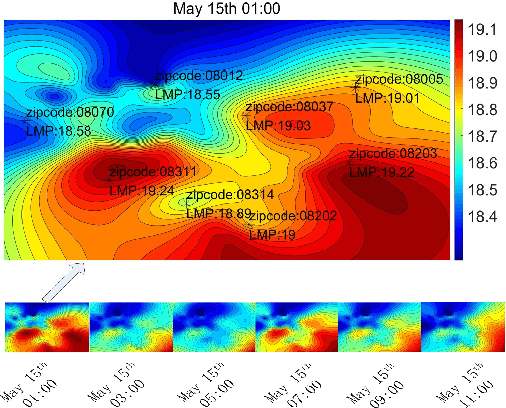

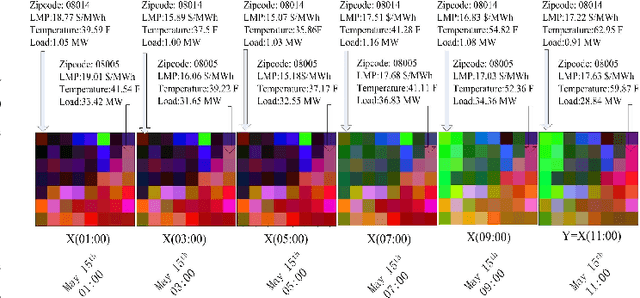
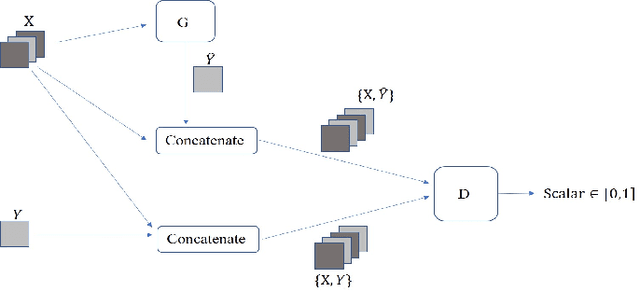
Abstract:In this paper, we propose an unsupervised data-driven approach to predict real-time locational marginal prices (RTLMPs). The proposed approach is built upon a general data structure for organizing system-wide heterogeneous market data streams into the format of market data images and videos. Leveraging this general data structure, the system-wide RTLMP prediction problem is formulated as a video prediction problem. A video prediction model based on generative adversarial networks (GAN) is proposed to learn the spatio-temporal correlations among historical RTLMPs and predict system-wide RTLMPs for the next hour. An autoregressive moving average (ARMA) calibration method is adopted to improve the prediction accuracy. The proposed RTLMP prediction method takes public market data as inputs, without requiring any confidential information on system topology, model parameters, or market operating details. Case studies using public market data from ISO New England (ISO-NE) and Southwest Power Pool (SPP) demonstrate that the proposed method is able to learn spatio-temporal correlations among RTLMPs and perform accurate RTLMP prediction.
 Add to Chrome
Add to Chrome Add to Firefox
Add to Firefox Add to Edge
Add to Edge